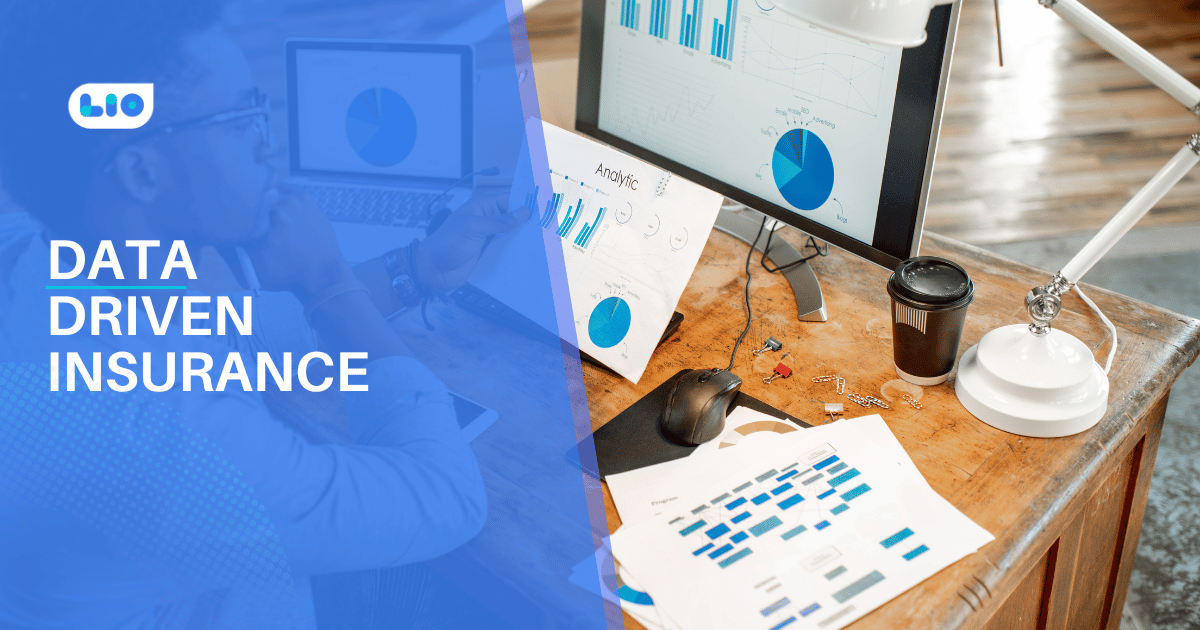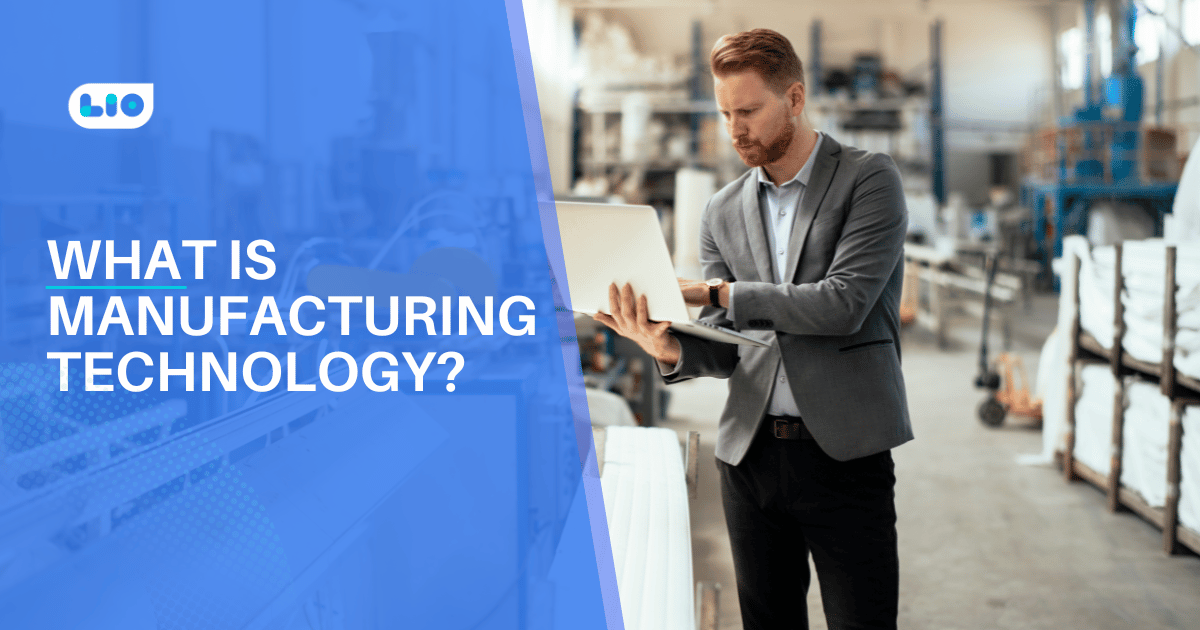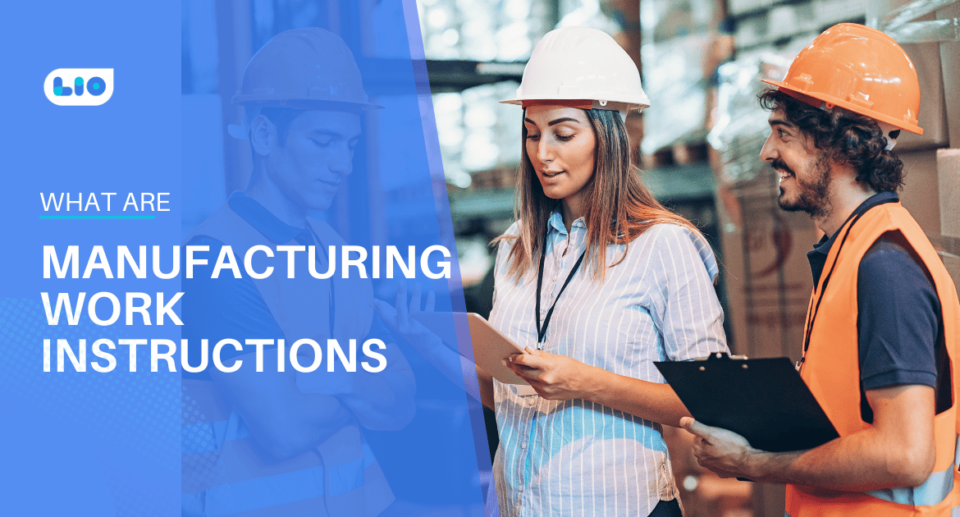Industry 4.0 Explained: The 4th Industrial Revolution
Gaurav Singh Rawat
- May 30, 2024
- 20 Min Read
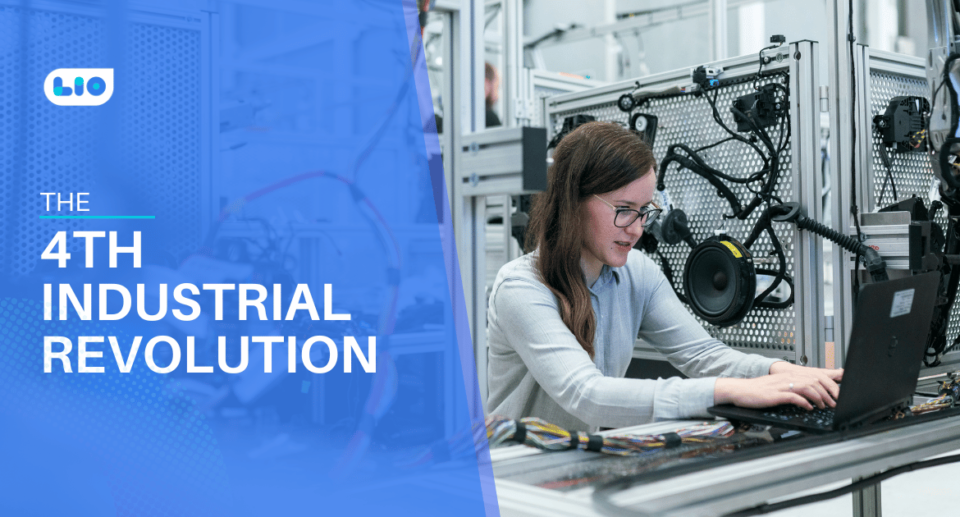
Industry 4.0, also known as the Fourth Industrial Revolution, is transforming the manufacturing landscape through the integration of advanced technologies such as the Internet of Things (IoT), artificial intelligence (AI), robotics, and 3D printing.
This new era of industrialization is characterized by the convergence of the physical, digital, and biological worlds, leading to the creation of smart factories and interconnected systems that optimize production processes and enable mass customization.
Brief Overview of Industry 4.0 and the 4th Industrial Revolution
Industry 4.0 represents a significant shift from the previous industrial revolutions, which were driven by mechanization, mass production, and automation. The Fourth Industrial Revolution builds upon these foundations, leveraging the power of data, connectivity, and intelligent systems to create a more agile, efficient, and responsive manufacturing ecosystem. Key technologies driving Industry 4.0 include:
- Industrial Internet of Things (IIoT)
- Cloud computing and edge computing
- Big Data and analytics
- Artificial intelligence and machine learning
- Robotics and automation
- Additive manufacturing (3D printing)
- Augmented reality and virtual reality
- Cybersecurity
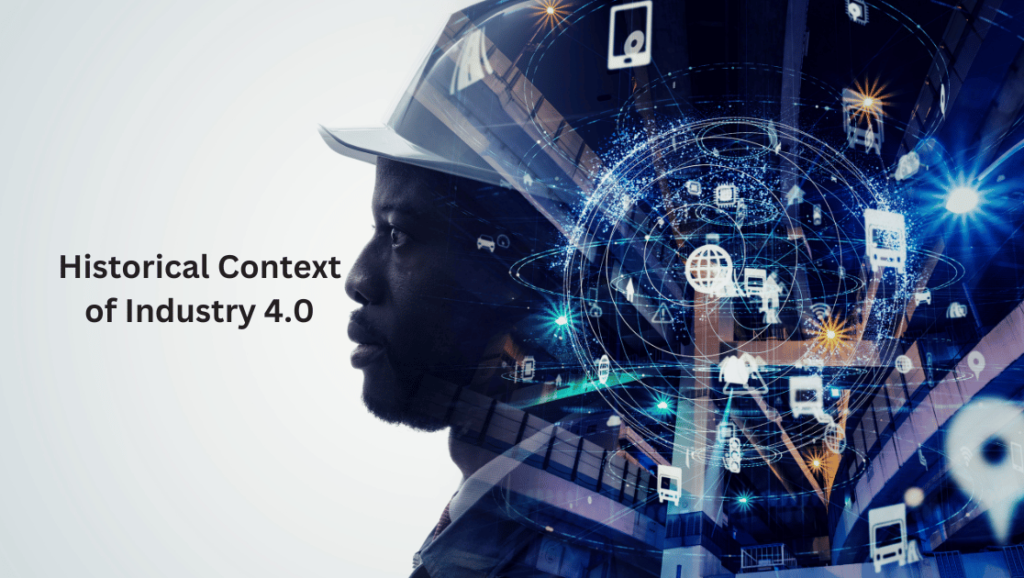
Historical Context of Industry 4.0
To understand the significance of Industry 4.0, it is essential to examine the historical context of the previous industrial revolutions.
First Industrial Revolution (late 18th century)
The Second Industrial Revolution, also known as the Technological Revolution, took place in the early 20th century. This period was characterized by the widespread adoption of electricity, the introduction of mass production techniques (e.g., the assembly line), and the growth of the steel, chemical, and automobile industries.
Innovations such as the telephone, the lightbulb, and the internal combustion engine transformed both industry and society.
Second Industrial Revolution (early 20th century)
The Second Industrial Revolution, also known as the Technological Revolution, took place in the early 20th century. This period was characterized by the widespread adoption of electricity, the introduction of mass production techniques (e.g., the assembly line), and the growth of the steel, chemical, and automobile industries.
Innovations such as the telephone, the lightbulb, and the internal combustion engine transformed both industry and society.
Third Industrial Revolution (mid-20th century)
The Third Industrial Revolution, also referred to as the Digital Revolution, began in the mid-20th century.
This era saw the emergence of digital technologies, such as the computer, the internet, and mobile devices. Automation, robotics, and the proliferation of electronic devices in manufacturing marked this period, setting the stage for the development of Industry 4.0.
Industry 4.0 builds upon the advancements of the previous industrial revolutions, integrating cutting-edge technologies to create a more connected, intelligent, and efficient manufacturing landscape. As industries adopt these technologies, they can expect to see improvements in productivity, flexibility, and customer satisfaction, while also facing challenges related to workforce reskilling, cybersecurity, and the need for standardized frameworks.
The Fourth Industrial Revolution is not just about technological change; it also has profound implications for society, the economy, and the future of work. As Industry 4.0 continues to evolve, it will be crucial for businesses, governments, and individuals to adapt and collaborate to ensure that the benefits of this transformation are widely shared and that potential risks are effectively managed.
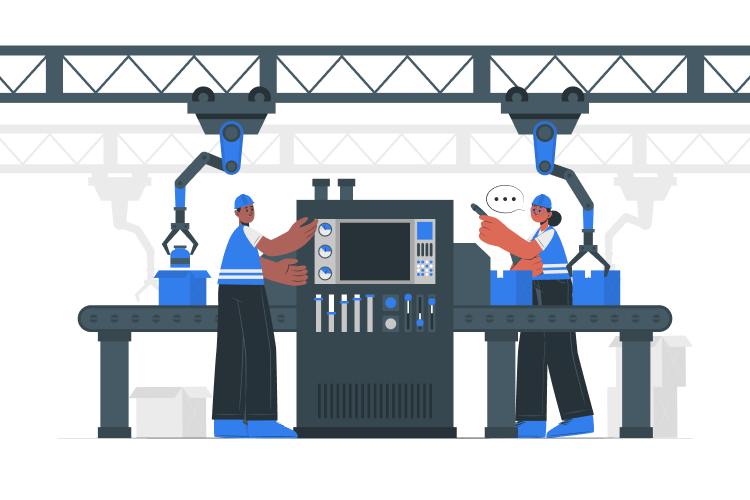
Embrace Industry 4.0
Transform your manufacturing with smart technologies. Learn how Industry 4.0 can revolutionize your operations and boost efficiency.
Industry 4.0: The Key Technologies Driving the Fourth Industrial Revolution
Industry 4.0, also known as the Fourth Industrial Revolution, is transforming the manufacturing landscape through the integration of advanced technologies such as the Internet of Things (IoT), artificial intelligence (AI), robotics, and 3D printing.
This new era of industrialization is characterized by the convergence of the physical, digital, and biological worlds, leading to the creation of smart factories and interconnected systems that optimize production processes and enable mass customization.
Internet of Things (IoT) and Industrial Internet of Things (IIoT)
The Internet of Things (IoT) and its subset, the Industrial Internet of Things (IIoT), are crucial components of Industry 4.0. IoT refers to the interconnection of devices, sensors, and machines through the internet, allowing for real-time data collection and exchange. In the industrial context, IIoT enables the creation of smart factories where machines, sensors, and systems communicate with each other to optimize production processes and improve efficiency.
IIoT systems are based on a layered structure that includes devices, networks, services, and content. Devices such as sensors, machines, and GPS locators collect data, which is then transmitted through a network layer to servers for analysis. The analyzed data is used to offer specific services and is presented to human operators through an interface.
Big Data and Analytics
The vast amounts of data generated by IoT devices and industrial systems require advanced analytics capabilities to extract valuable insights. Big Data analytics plays a crucial role in Industry 4.0 by enabling manufacturers to optimize production processes, predict maintenance needs, and improve product quality.
Big Data analytics helps integrate previously isolated systems, providing a complete visualization of manufacturing processes. It allows for the identification of bottlenecks, prediction of demand, and implementation of predictive maintenance strategies. By leveraging Big Data, manufacturers can make informed decisions and achieve significant gains in efficiency and productivity.
Artificial Intelligence and Machine Learning
Artificial Intelligence (AI) and Machine Learning (ML) are key technologies driving the automation and optimization of industrial processes in Industry 4.0. AI enables machines to perform tasks that typically require human intelligence, such as visual perception, speech recognition, and decision-making. ML algorithms allow systems to learn from data and improve their performance over time without being explicitly programmed.
In the context of Industry 4.0, AI and ML are used for various applications, including predictive maintenance, quality control, process optimization, and supply chain management. These technologies enable the creation of intelligent systems that can adapt to changing conditions and make autonomous decisions, leading to increased efficiency and reduced downtime.
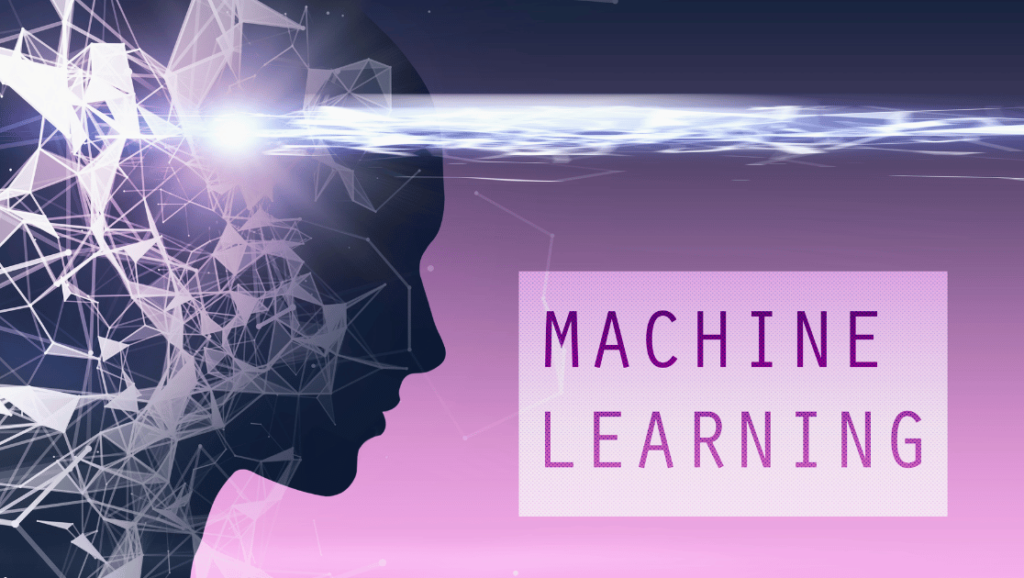
Robotics and Automation
Advanced robotics and automation are essential components of Industry 4.0, enabling the creation of flexible and efficient production systems. Industrial robots, collaborative robots (cobots), and mobile robots are used to automate repetitive tasks, improve precision, and enhance safety in manufacturing environments.
The integration of robotics and automation in Industry 4.0 leads to increased productivity, reduced costs, and improved product quality. Robots can work alongside human operators, taking on dangerous or repetitive tasks, while humans focus on more complex and creative activities. The flexibility and reconfigurability of modern robots allow manufacturers to adapt quickly to changing market demands and product requirements.
Additive Manufacturing (3D Printing)
Additive manufacturing, commonly known as 3D printing, is a key technology in Industry 4.0 that enables the creation of complex and customized parts directly from digital models. This technology allows for rapid prototyping, on-demand production, and the creation of lightweight and optimized components.
3D printing offers several advantages in the context of Industry 4.0, including increased design freedom, reduced waste, and shorter lead times. It enables manufacturers to produce small batches of customized products cost-effectively and to respond quickly to changing customer demands. The integration of 3D printing with other Industry 4.0 technologies, such as IoT and AI, further enhances its potential for transforming manufacturing processes.
Augmented Reality and Virtual Reality
Augmented Reality (AR) and Virtual Reality (VR) are emerging technologies that are finding applications in Industry 4.0. AR overlays digital information on the real world, while VR creates fully immersive digital environments. These technologies are used for various purposes, including training, product design, and remote collaboration.
In the industrial context, AR can provide workers with real-time information and guidance, improving efficiency and reducing errors. VR can be used for virtual prototyping, allowing designers to test and optimize products before physical production. These technologies enable better collaboration between teams and can significantly reduce development times and costs.
Cloud Computing and Edge Computing
Cloud computing and edge computing are essential for enabling the connectivity and data processing required by Industry 4.0 applications. Cloud computing provides scalable and flexible computing resources, allowing manufacturers to store and analyze large amounts of data generated by IoT devices and industrial systems.
Edge computing complements cloud computing by bringing data processing closer to the source, reducing latency and enabling real-time decision-making. By processing data at the edge, manufacturers can respond quickly to changing conditions and optimize production processes in real-time. The combination of cloud and edge computing provides a robust and efficient infrastructure for Industry 4.0 applications.

Unlock Smart Manufacturing
Discover the benefits of Industry 4.0. Implement IoT, AI, and automation to enhance productivity and stay competitive.
Cybersecurity
As Industry 4.0 relies heavily on interconnected systems and data exchange, cybersecurity becomes a critical concern. The increased connectivity and digitization of industrial systems expose them to potential cyber threats, such as data breaches, malware attacks, and unauthorized access.
To address these challenges, manufacturers must implement robust cybersecurity measures, including secure communication protocols, access control, and data encryption. Cybersecurity should be an integral part of the design and implementation of Industry 4.0 systems, ensuring the confidentiality, integrity, and availability of data and systems.
Characteristics of the Fourth Industrial Revolution
Industry 4.0, also known as the Fourth Industrial Revolution, is transforming the manufacturing landscape through the integration of advanced technologies such as the Internet of Things (IoT), artificial intelligence (AI), robotics, and 3D printing.
This new era of industrialization is characterized by the convergence of the physical, digital, and biological worlds, leading to the creation of smart factories and interconnected systems that optimize production processes and enable mass customization.
Smart Factories and Cyber-Physical Systems
One of the defining characteristics of Industry 4.0 is the emergence of smart factories, where cyber-physical systems (CPS) monitor and control physical processes. These systems consist of interconnected machines, devices, and sensors that communicate with each other and with humans in real-time. Smart factories leverage the power of data and intelligent automation to optimize production processes, improve efficiency, and reduce downtime.
Cyber-physical systems form the backbone of Industry 4.0, enabling the seamless integration of the physical and digital worlds. They collect data from various sources, analyze it using advanced algorithms, and make autonomous decisions based on the insights gained. This allows for greater flexibility, adaptability, and responsiveness in manufacturing processes.
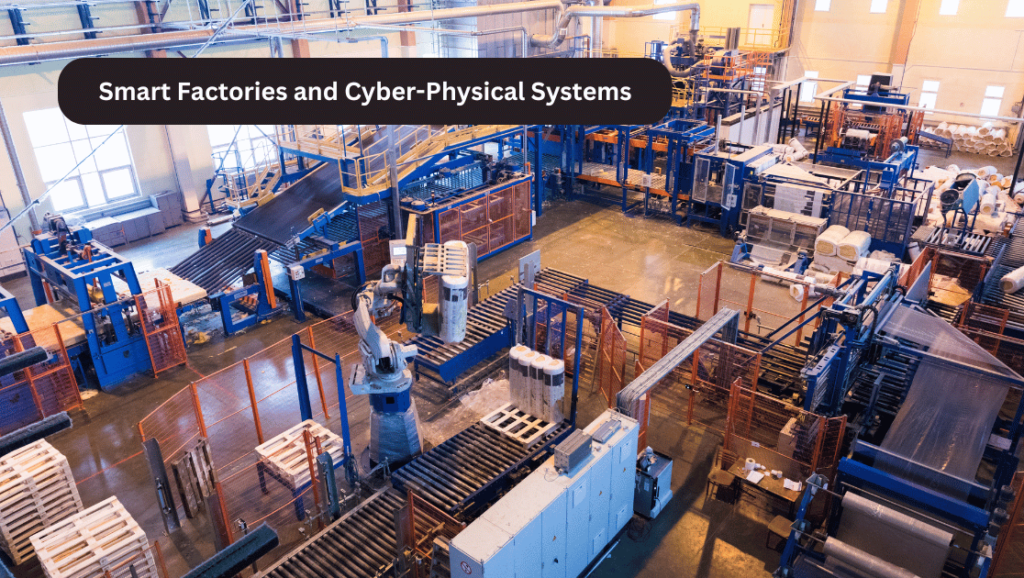
Interconnectivity and Interoperability
Industry 4.0 is built on the principle of interconnectivity and interoperability, where machines, devices, and systems are connected and can communicate with each other seamlessly. This is achieved through the use of standard communication protocols, such as OPC UA and MQTT, which enable the exchange of data and information across different platforms and systems.
Interoperability is crucial for the successful implementation of Industry 4.0, as it allows for the integration of legacy systems with new technologies, enabling a smooth transition towards smart manufacturing. It also facilitates collaboration between different stakeholders, such as suppliers, manufacturers, and customers, leading to more efficient and transparent supply chains.
Decentralized Decision Making
Another key characteristic of Industry 4.0 is decentralized decision making, where machines and systems are empowered to make autonomous decisions based on real-time data and insights. This is made possible by the use of advanced analytics, machine learning, and artificial intelligence technologies that enable systems to learn from past experiences and adapt to changing conditions.
Decentralized decision making allows for faster response times, improved flexibility, and increased efficiency in manufacturing processes. It also reduces the need for human intervention, freeing up workers to focus on higher-value tasks and enabling them to collaborate more effectively with machines.
Real-Time Data and Transparency
Industry 4.0 is driven by the availability of real-time data and the ability to gain insights from it. Smart factories are equipped with sensors and devices that collect vast amounts of data on various aspects of the manufacturing process, such as machine performance, product quality, and energy consumption. This data is then analyzed using advanced analytics tools to identify patterns, detect anomalies, and optimize processes.
Real-time data also enables greater transparency in manufacturing processes, allowing for better visibility and control over the entire supply chain. This transparency extends to customers as well, who can track the progress of their orders and receive personalized products tailored to their specific needs.

Future-Proof Your Factory
Stay ahead with Industry 4.0 innovations. Explore how digital transformation can optimize your production processes and reduce costs.
Predictive Maintenance and Self-Optimization
Industry 4.0 technologies enable predictive maintenance and self-optimization of manufacturing processes. By analyzing real-time data from machines and sensors, predictive maintenance algorithms can detect potential failures before they occur, reducing downtime and maintenance costs. This allows for proactive maintenance strategies that minimize disruptions to production processes.
Self-optimization is another key feature of Industry 4.0, where machines and systems continuously monitor their own performance and adjust their parameters to optimize efficiency and quality. This is achieved through the use of machine learning algorithms that learn from past data and adapt to changing conditions, enabling continuous improvement of manufacturing processes.
Industry 4.0: Benefits and Opportunities
Industry 4.0, also known as the Fourth Industrial Revolution, is transforming the manufacturing landscape by integrating advanced technologies such as the Internet of Things (IoT), artificial intelligence (AI), robotics, and 3D printing. This new era of industrialization offers numerous benefits and opportunities for businesses to improve their operations, products, and services.
Increased Productivity and Efficiency
One of the primary benefits of Industry 4.0 is the significant improvement in productivity and efficiency. Smart factories, equipped with interconnected systems and real-time data analytics, enable manufacturers to optimize their processes, reduce downtime, and increase output.
Predictive maintenance, powered by AI and machine learning, helps prevent equipment failures and minimizes disruptions to production.

Improved Product Quality and Customization
Industry 4.0 technologies enable manufacturers to achieve higher levels of product quality and customization. Advanced sensors and real-time monitoring systems allow for early detection and correction of defects, reducing waste and improving overall quality.
Additionally, the flexibility and agility provided by smart manufacturing systems enable companies to respond quickly to changing customer demands and offer personalized products.
Supply Chain Optimization
The integration of IoT and real-time data analytics in Industry 4.0 enables the optimization of supply chain processes. By connecting suppliers, manufacturers, and customers through digital platforms, companies can improve visibility, reduce lead times, and enhance collaboration.
Predictive analytics and AI-driven demand forecasting help optimize inventory levels and streamline logistics operations.

Revolutionize Production
Leverage Industry 4.0 technologies to streamline operations and improve decision-making. Start your digital transformation journey now.
New Business Models and Revenue Streams
Industry 4.0 opens up opportunities for new business models and revenue streams. The ability to collect and analyze vast amounts of data enables manufacturers to offer value-added services, such as predictive maintenance and performance optimization.
Additionally, the integration of digital technologies facilitates the development of innovative products and services, creating new revenue streams and enhancing competitiveness.
Sustainability and Resource Efficiency
Industry 4.0 technologies contribute to sustainability and resource efficiency by enabling manufacturers to optimize energy consumption, reduce waste, and minimize their environmental impact. Smart factories can monitor and control energy usage in real-time, while advanced analytics help identify opportunities for process improvements and resource optimization.
Moreover, the adoption of circular economy principles, facilitated by IoT and data analytics, promotes the reuse, refurbishment, and recycling of materials.
Industry 4.0: Challenges and Considerations
Fourth Industrial Revolution is transforming the manufacturing landscape through the integration of advanced technologies such as the Internet of Things (IoT), artificial intelligence (AI), robotics, and 3D printing. While this new era of industrialization offers numerous benefits, it also presents several challenges and considerations that organizations must address to successfully implement and leverage these technologies.
High Implementation Costs
One of the primary challenges associated with Industry 4.0 is the high implementation costs. Investing in advanced technologies, such as IoT devices, robotics, and AI systems, requires significant financial resources. Additionally, the integration of these technologies with existing systems and infrastructure can be complex and costly.
Companies must carefully assess the return on investment and develop a clear implementation strategy to justify the upfront costs.

Workforce Reskilling and Job Displacement
Industry 4.0 technologies, particularly automation and AI, have the potential to displace certain jobs and require workforce reskilling. As machines take over repetitive and manual tasks, workers will need to acquire new skills to operate and maintain these advanced systems.
Companies must invest in training and education programs to ensure their workforce is prepared for the future of work. Additionally, there is a need for collaboration between industry, government, and educational institutions to address the skills gap and support workforce transitions.
Cybersecurity and Data Privacy Risks
The increased connectivity and data exchange in Industry 4.0 raise concerns about cybersecurity and data privacy. As more devices and systems are connected to the internet, the risk of cyber attacks and data breaches increases.
Manufacturers must implement robust security measures, such as encryption, access control, and network segmentation, to protect their systems and sensitive data. Additionally, compliance with data privacy regulations, such as GDPR, is crucial to ensure the responsible handling of personal information.
Standardization and Regulatory Frameworks
The lack of standardization and regulatory frameworks poses challenges for the widespread adoption of Industry 4.0 technologies. Interoperability between different systems and devices is essential for seamless integration and data exchange.
The development of international standards and protocols is necessary to ensure compatibility and facilitate collaboration across industries and borders. Moreover, regulatory frameworks must evolve to address the unique challenges posed by Industry 4.0, such as data ownership, liability, and intellectual property protection.
Organizational Change Management
Implementing Industry 4.0 requires significant organizational change, which can be challenging for companies. The adoption of new technologies and processes often requires a shift in mindset and culture.
Resistance to change, lack of leadership support, and inadequate communication can hinder the successful implementation of Industry 4.0 initiatives. Companies must develop effective change management strategies, foster a culture of innovation, and engage employees at all levels to drive the necessary organizational transformation.
Industry 4.0 Applications and Use Cases
Fourth Industrial Revolution is transforming various sectors by integrating advanced technologies such as the Internet of Things (IoT), artificial intelligence (AI), robotics, and big data analytics.
These technologies are enabling the creation of smart, interconnected systems that optimize processes, improve efficiency, and drive innovation. Let’s explore some of the key industry applications and use cases of Industry 4.0.

Manufacturing
Industry 4.0 is revolutionizing the manufacturing sector by enabling the creation of smart factories. These factories leverage IoT sensors, real-time data analytics, and autonomous robots to optimize production processes, reduce downtime, and improve product quality.
Predictive maintenance, powered by AI and machine learning, helps prevent equipment failures and minimizes disruptions to production. Additive manufacturing (3D printing) enables rapid prototyping and customized production, while collaborative robots (cobots) work alongside human operators to enhance productivity and safety.
Logistics and Supply Chain
Industry 4.0 technologies are transforming logistics and supply chain management, enabling real-time tracking, route optimization, and improved visibility.
IoT sensors and tracking devices attached to shipments or placed in warehouses allow for the monitoring of goods in real-time, streamlining picking, packing, and delivery processes. Predictive analytics and AI-driven demand forecasting help optimize inventory levels and reduce lead times. Blockchain technology enhances transparency, traceability, and security in supply chain transactions.
Energy and Utilities
Industry 4.0 is driving significant changes in the energy and utilities sector, enabling smart grids, predictive maintenance, and optimized resource management. IoT sensors and real-time data analytics help monitor and control energy consumption, improving efficiency and reducing waste.
Predictive maintenance algorithms detect potential failures in power generation and distribution equipment, minimizing downtime and ensuring reliable energy supply. The integration of renewable energy sources and the development of smart microgrids are also facilitated by Industry 4.0 technologies.
Healthcare and Pharmaceuticals
Industry 4.0 is transforming healthcare and pharmaceuticals, enabling personalized medicine, remote monitoring, and optimized drug discovery. IoT-enabled wearable devices and remote monitoring systems allow for continuous patient monitoring and early detection of health issues.
AI and machine learning algorithms accelerate drug discovery and development processes, reducing time-to-market and improving patient outcomes. Big data analytics and cloud computing enable the processing of vast amounts of medical data, facilitating research and enabling data-driven decision making.
Agriculture and Food Production
Industry 4.0 technologies are transforming agriculture and food production, enabling precision farming, smart irrigation, and optimized supply chains. IoT sensors and drones collect real-time data on soil conditions, weather patterns, and crop health, enabling data-driven decision-making. AI-powered algorithms optimize irrigation, fertilization, and pest control, improving crop yields and reducing environmental impact. Blockchain technology enhances traceability and transparency in food supply chains, ensuring food safety and quality.
Industry 4.0 represents a paradigm shift in manufacturing and related industries, offering significant benefits and opportunities for increased productivity, improved product quality, supply chain optimization, new business models, and sustainability. However, the successful implementation of Industry 4.0 technologies requires addressing challenges such as high implementation costs, workforce reskilling, cybersecurity risks, standardization, and organizational change management.
Conclusion
As Industry 4.0 continues to evolve, it is crucial for organizations to embrace these technologies and adapt to the changing landscape. By developing strategies to address the challenges and capitalize on the opportunities, companies can position themselves for success in the era of the fourth industrial revolution.
The future of manufacturing lies in the successful integration of digital technologies, and those who proactively adopt and innovate will be well-positioned to thrive in the increasingly competitive global marketplace.
The conclusion succinctly summarizes the key points about Industry 4.0 covered in the article, including the transformative technologies, potential benefits, implementation challenges, and the importance of embracing this shift for organizations to remain competitive.
It emphasizes the need for companies to proactively adopt and innovate with these technologies to succeed in the future of manufacturing.
Frequently Asked Questions (FAQs)
What role does 5G technology play in enabling Industry 4.0?
5G networks provide the high-speed, low-latency, and reliable connectivity needed for Industry 4.0 applications like real-time monitoring, remote control of machines, and seamless communication between devices. The increased bandwidth and reduced lag of 5G compared to previous wireless technologies is crucial for supporting the data-intensive and time-sensitive processes in smart factories.
How does Industry 4.0 impact the workforce and job market?
Industry 4.0 is changing the nature of work in manufacturing. While some repetitive tasks may be automated, new jobs are emerging that require skills in areas like data analysis, programming, and maintaining complex automated systems. Upskilling and reskilling initiatives are important to prepare the workforce for these changes. Overall, Industry 4.0 is expected to be a net creator of jobs.
What are digital twins and how are they used in Industry 4.0?
A digital twin is a virtual replica of a physical object, process or system. In Industry 4.0, digital twins of machines, production lines, or even entire factories can be created. These digital models are fed real-time data from sensors to mirror what is happening in the physical world. Digital twins allow for process optimization, predictive maintenance, and scenario testing without impacting real-world operations.
How can small and medium enterprises (SMEs) adopt Industry 4.0 technologies?
While large corporations may have more resources to invest in Industry 4.0, SMEs can also benefit from these technologies. Strategies for SMEs include starting with smaller pilot projects, leveraging cloud and as-a-service models to reduce upfront costs, collaborating with technology providers and research institutions, and seeking government support programs aimed at helping SMEs digitalize.
What are some of the standards and protocols enabling interoperability in Industry 4.0?
Interoperability standards allow the various devices and systems in an Industry 4.0 environment to communicate and work together. Key standards include OPC UA (Open Platform Communications Unified Architecture) for machine-to-machine communication, RAMI 4.0 (Reference Architectural Model Industrie 4.0) for a common framework, and oneM2M for IoT applications. Time Sensitive Networking (TSN) is also important for deterministic real-time communication.

